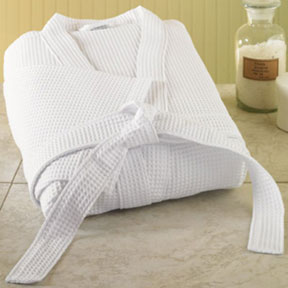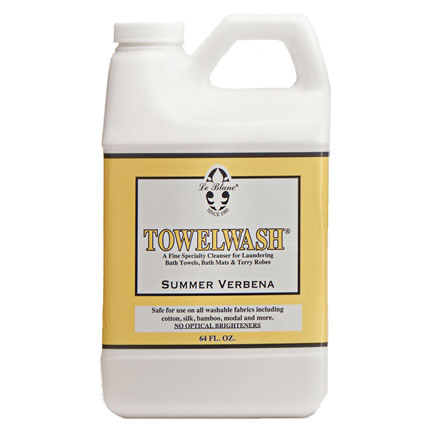Save to...
What is the difference between a knife edge and a welted edge?
A knife edge is a seam without a decorative finish. It tapers to sharp, crisp edges and corners, creating a very simple, clean, polished look.
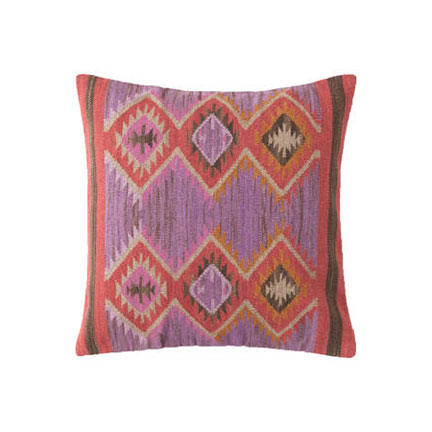
A welted edge also tapers, but it includes a piping or some other type of decorative border or trim.
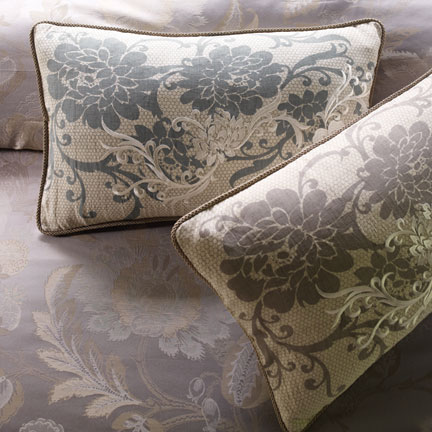
To view our entire selection of throw pillows, click here.
The Perfect Solution: Extra-Long Twin Beds
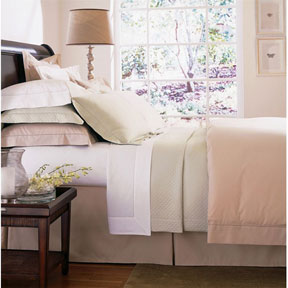 Have you ever wondered about Extra-Long Twin Beds? If you have, here’s a little primer.
Have you ever wondered about Extra-Long Twin Beds? If you have, here’s a little primer.
The most common standard bed sizes in America are:
Twin (39″ x 75”)
Twin XL (39″ x 80”)
Full (54″ x 75”)
Queen (60″ x 80”)
King (78″ x 80”)
California King (72″ x 84”)
A regular Twin mattress is the same length as a Full mattress. The Twin XL is 5” longer – the same length as the Queen and the King. If fact, some people push two Twin XLs together to form a King. This is useful for homes with tight staircases that may not be able to maneuver a true King into place. It also allows for varying firmness on each side while allowing for the rotation of the mattresses, minimizing the problem of sagging in the middle.
 The Twin XL offers more room through the extra length, perfect for a taller individual that may have trouble sleeping in a regular twin.
The Twin XL offers more room through the extra length, perfect for a taller individual that may have trouble sleeping in a regular twin.
The Twin XL is good alternative for cramped living spaces that are too small for a Queen or a King. It is almost universally used in college dorms, in order to accommodate a variety of different body types.
The “Twin” bed is so named because it was originally designed to be placed side by side, allowing two individuals to sleep more comfortably in the same room. Today, Twin beds are often used in children’s and guest bedrooms.
Unfortunately, luxury Twin XL bed linens are not always that easy to find. We carry several Twin XL fitted sheets from Sferra’s most popular basics – Celeste, Fiona, Giotto, and Grande Hotel. They are available in White or Ivory.
What is Terry Cloth?
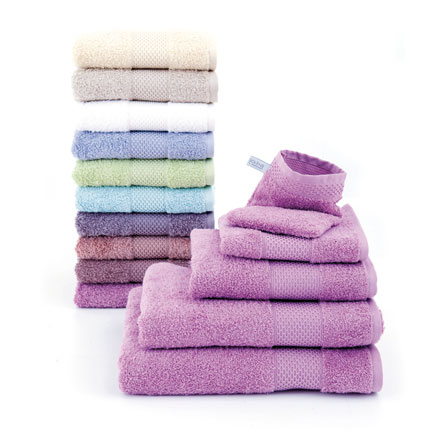 Terry cloth is a fabric with uncut loops, or pile, deliberately standing away from its ground base. Terry cloth is usually seen in bath towels and bathrobes. Terry cloth is woven using two warp beams: the ground warp, which forms the base of the towel, and the pile warp, which creates the loops of thread that give the fabric its texture and function.
Terry cloth is a fabric with uncut loops, or pile, deliberately standing away from its ground base. Terry cloth is usually seen in bath towels and bathrobes. Terry cloth is woven using two warp beams: the ground warp, which forms the base of the towel, and the pile warp, which creates the loops of thread that give the fabric its texture and function.
These loops effectively increase the surface area of the fabric, enhancing its absorbency, while maintaining a soft feel.
Terry cloth is traditionally made from cotton, but it can also be made from different materials such as silk, linen or other natural and artificial fibers.
Most manufacturers choose cotton because, unlike other materials that get weaker in water, cotton’s absorbent fiber gets stronger when wet. In fact, cotton can absorb 20 to 30 times its own weight in water. The loop pile acts as a sponge while withstanding squeezing, pulling, rubbing, twisting and turning.
 Because of its absorbency attributes, terry cloth is commonly used for towels, bath robes, beach cover-ups, athletic warm-ups and headbands. Terry cloth can easily be dyed or printed, as well as decoratively embroidered.
Because of its absorbency attributes, terry cloth is commonly used for towels, bath robes, beach cover-ups, athletic warm-ups and headbands. Terry cloth can easily be dyed or printed, as well as decoratively embroidered.
One of our favorite terry cloth towels is Sferra’s Bello, woven in Belgium and offered in 31 vibrant colors. Bello towels are woven with shorter loops and greater loop density to make them more absorbent than the average towel.
These shorter loops also help avoid snags. Bello also uses a special dye process that makes it fade/chlorine resistant.
How Should I Care for my Bath Towels?
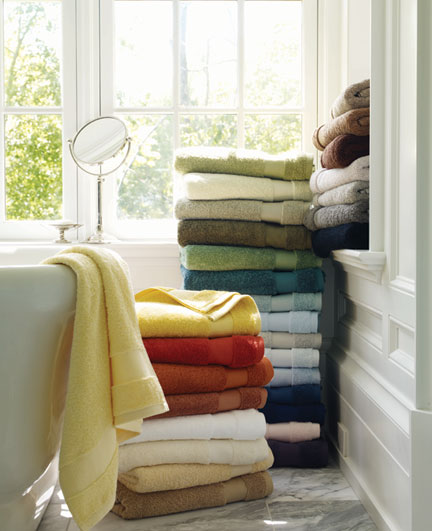 We love having stacks of clean, fluffy towels in every bathroom, so we’ve gotten really good at taking care of them. Here are a few tips for making your bath towels will look fresher, feel softer and last longer.
We love having stacks of clean, fluffy towels in every bathroom, so we’ve gotten really good at taking care of them. Here are a few tips for making your bath towels will look fresher, feel softer and last longer.
1) Wash your new towels before using them. This will remove any dirt, lint and other residue, and make them more absorbent. Before laundering, separate your towels by color (white, light colors and dark colors) to avoid colors bleeding together. Do not use brightening detergents, as they will affect the towel color. Sferra’s Bello towels have a special dye treatment that resists fading.
2) Do not wash towels with other clothing items. Rough and abrasive objects – buttons, zippers, embellishments, etc. – can pull at the pile and fray the towels. Bath rugs can also wear down towels, so always make sure to wash them separately.
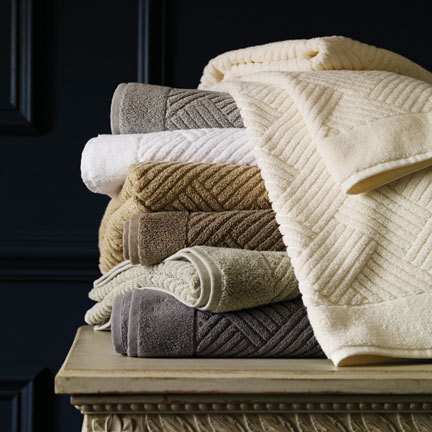 3) Avoid excessive heat in washing or drying as it will damage the fibers and increase the shrinkage of the towels. Wash your towels in cold water to help the colors stay bright and help extend the life of the fibers. Remember not to overstuff the washer.
3) Avoid excessive heat in washing or drying as it will damage the fibers and increase the shrinkage of the towels. Wash your towels in cold water to help the colors stay bright and help extend the life of the fibers. Remember not to overstuff the washer.
4) Do not use chlorine bleach, as it will weaken the fibers, cause the colors to fade and create a rough, harsh texture.
5) Do not use fabric softeners. In addition to harming the fibers, many contain chemicals that coat fabric and the waxy build-up will actually repel water and make your towels less absorbent.
6) Use less detergent. Detergent residue can make the cloth rough. Most bath linens don’t really get that dirty. After all, they are usually drying a clean body. In that case, when washing, consider using about 1/2 of the recommended amount of detergent. The towels will get clean and remain softer.
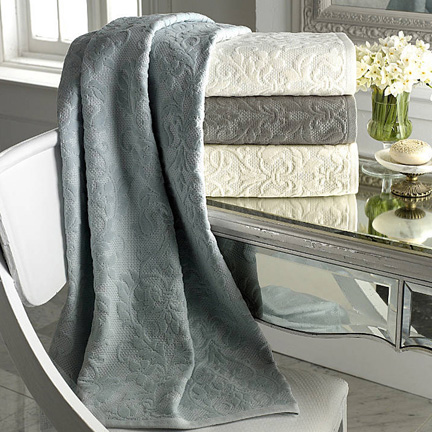 7) Remove from the washing machine immediately after washing. Give your towels a shake when taking them out of the washer. This will help fluff the terry loops that aid absorbency.
7) Remove from the washing machine immediately after washing. Give your towels a shake when taking them out of the washer. This will help fluff the terry loops that aid absorbency.
8) Tumble dry on low heat and do not overdry. The heat from the dryer will damage fibers. Do not iron your towels, as this will reduce absorbency.
9) Hang towels to dry after each use. If you find stray pulled loops on towel, cut them off with a pair of scissors. This will not cause any damage to the towel and it will prevent further problems later.
10) Avoid contact with bathroom cleansers and beauty products, such as items contain bleaching agents and may cause permanent discoloration to your towel.
And finally, never dry clean your towels.
We love LeBlanc Towel Wash for laundering our towels. It’s specially formulated to care for your towels, and it comes in four fresh scents.
Do it Yourself: How to Install a Stair Runner

The classic stair runner is like an instant facelift for an old wooden staircase. It adds a touch of personality in an unexpected place. Our friends at Dash & Albert have shown us how to recreate this look with just a few simple steps.
What you’ll need:
Woven cotton or indoor/outdoor stair runner of your choice; measure your stairs first to determine the total length needed (see step 1)
2’ x 8’ rug pads; measure your stairs first to determine the total length needed (see step 1)
Fabric scissors
Pneumatic staple gun
3/8-inch to 1/2-inch staples
Tape measure
Yardstick or other straight edge
Double-stick carpet tape
Pencil
Marker
Bolster chisel
A little patience
How to do it:
1. To determine how long a runner you’ll need, measure the depth of the stair tread and the height of the riser. Multiply the total by the number of stairs; this is your total runner length.


2. Measure the width of the treads from end to end, or from end to banisters. Mark the middle with a pencil.


3. Create individual rug pads for each stair tread by fitting the top edge of the pad against the back of the tread and gently straightening it.

4. Mark the cut line on the pad about .5 inches from the front of the stair tread. (Note that the runner will be slightly wider than the rug pad, and thus the edges of the rug pad won’t peek out from underneath.) Cut the rug pad along the line with fabric scissors. Measure and cut as many rug pads as needed to cover all treads.
5. Cut three pieces of double-stick carpet tape to fit the two outer edges and the middle of each rug-pad tread cover. Place them on the rug pad, making sure to align two pieces of the tape with the outer edges of the pad.


6. Fold the cut rug pads in half, preferably tape side out, to find the center.

7. Place the rug pads, tape side down, onto each tread, aligning the center fold with the pencil marks you created in the middle of each tread. Press with your hands to smooth out any bubbles.


8. Subtract the width of the runner from the width of the stair treads; the difference is the amount of space you’ll leave on each side of the runner. You can mark these points to make them easier to follow. Important: As you install the runner, periodically check this measurement to ensure that the runner remains straight all the way down.




9. Align the top of the runner with the bottom edge of the first tread. This creates a cleaner, less bulky look than going all the way over the top of the first tread, and eliminates “floating” pieces at the top of the stairs.

10. Using a pneumatic staple gun, staple the runner in place at its top edge, approximately every 3 inches. Be sure to include staples on both of the outer edges.

11. Use a bolster chisel to pull the runner taut against the corner of the riser and the next tread. Staple against the bottom of the riser approximately every 3 inches, including both of the outer edges. If you’re using a striped runner, step back and check to make sure the stripes are straight before moving on.


12. For a “waterfall”-style installation, which is a bit easier, simply pull the loose end of the runner over the edge of the next stair tread and repeat step 10.

13. For stair treads that have bullnoses, you can also do a “wrap”-style installation. Pull the loose end of the runner over the edge of the tread and use the bolster chisel to pull it taut around the bullnose. Staple underneath the bullnose against the riser approximately every 3 inches, including both the outer edges.


14. Repeat steps 9 through 11 or 12, until you reach the end of your first runner. Leaving about a 2-inch piece for overlap, cut off any remnant of runner, including the finished edge, to reduce bulk.



15. Overlap the 2-inch scrap of runner with the second runner, being careful to align the outer edges of the runners.

16. Begin the stapling process again.

17. When you get to the bottom stair, pull the runner taut against the bottom riser with the bolster chisel, then measure an extra 2 inches of runner. Mark, and cut with fabric scissors.

18. Fold under the extra 2 inches of runner, and staple the double layer of fabric against the bottom of the riser, approximately 3 inches apart, including both the outer edges.



Finished “waterfall”-style stair runner

Finished “wrap”-style stair runner

View our rugs and runners at GraciousStyle.com.
What is the Proper Format for a Monogram?
A traditional three-letter monogram for an individual has the initial of the individual’s surname (or last name) set larger in the center, with the individual’s first name initial to the left of it and the middle name initial the right of it. For example, the monogram for John Paul Smith would read:
JSP
Modern convention calls for a married couple to create a three-letter monogram using the initial of their shared surname set larger in the center, with the wife’s first name initial to the left of it and the husband’s first name initial the right of it. For example, if Mary Brown married John Smith, their monogram would read:
MSJ
Some references say that for married couples, the husband’s first name initial comes first. It is really a matter of personal preference.
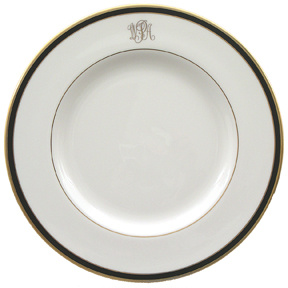
Old school custom, as espoused by Amy Vanderbilt’s Complete Book of Etiquette, would have the linens “marked with the married initials of the mistress of the house.” This three-letter monogram has the initial of the woman’s married surname set larger in the center, with her first name initial to the left of it and her maiden name initial to the right of it. For example, if Mary Brown married John Smith, their monogram would read:
MSB
There is an option to have all the initials the same size (the center initial is not larger.) These monograms do not follow the format described above for location of the surname initial. If all initials are the same size, then they are simply listed in order with the surname initial placed at the end. For example, John Paul Smith would read “JPS,” and Mary and John Smith would read “MJS.”
How Does Sferra Ensure Color Consistency in Their Collections?
As part of their extensive quality assurance efforts, Sferra uses a light box to examine swatches of each new dye lot. To ensure color consistency, they compare shade variations under the same light source as in Italy. Once they are in agreement with the weaving mill, they then allow the new fabric to be moved on to the cut and sew facility.

Sferra also uses the ultraviolet features of the light box to examine fabric in detecting the presence of optical brighteners, whitening agents, bleaches, and other harsh chemicals.

What Are the Different Types of Dash & Albert Rugs?
Dash & Albert rugs feel homey and cozy, but with a clean, contemporary look. They adapt to any terrain or style, be it a desert ranch in Tucson, an industrial loft in Manhattan, or a Malibu beach dream home. They are very versatile, and come in a variety of materials to suit many different locations.
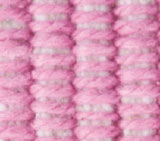
COTTON FLAT WEAVE
Cotton Flat Weave: Four to five piles of cotton yarn make up the weft. Hand woven with a basic loom weave. Stripe runs the long dimension of the rug.
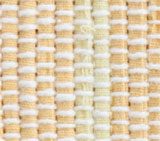
COTTON FINE RAG
Cotton Fine Rag: Made from sheeting, which allows the fabric to be cut thin for a very low-profile rug. Hand woven with a basic loom weave. Stripe runs the short dimension of the rug.
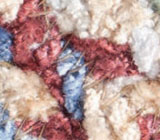
CHENILLE BRAIDED
Chenille Braided: Like the basic chenille weave, with the colors braided together to create a marled effect.
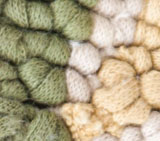
COTTON MEDIUM HOOK
Cotton Medium Hook: Hand hooked from jersey fabric using smaller hooks, for a lower-profile rug. Cotton canvas back.
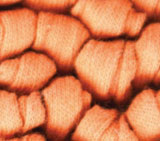
COTTON LARGE HOOK
Cotton Large Hook: Made from jersey fabric with large hooks, creating a high-profile rug. Cotton canvas back.
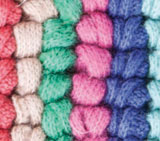
COTTON MICRO-HOOK
Cotton Micro-Hook: Hand hooked from thin-cut jersey fabric, allowing for more detailed patterns. Cotton canvas back.
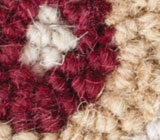
WOOL MICRO-HOOK
Wool Micro-Hook: Three to four plies of wool yarn are used in each hook and hand-guided through a canvas tracing pattern. The small, tight hooks create a low-profile rug. Cotton canvas back.
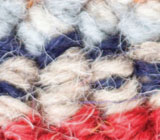
WOOL MEDIUM HOOK
Wool Medium Hook: Four to five plies of wool yarn are used in large hooks to create a high-profile rug. Cotton canvas back.
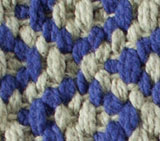
COTTON JACQUARD
Cotton Jacquard: Made from cotton with a jacquard loom construction, with the weft skipping specific warps to create the pattern. A soft, lightweight rug.
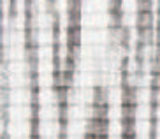
COTTON CHENILLE
Cotton Chenille: From the French for “caterpillar,” this plush weave features a tie-dye pattern. Natural color variations may occur.
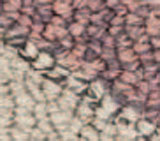
COTTON YARN HOOKED
Cotton Yarn Hooked: Small yarns of different colors are used in each hook for a marled effect. Cotton canvas back.
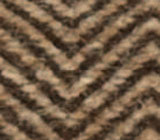
WOOL WOVEN
Wool Woven: Wool yarns make up the warp and weft of this hand-woven, basic-loom-weave rug. Stripe runs the short dimension of the rug.
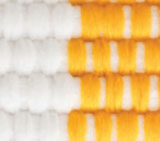
POLYPROPYLENE FLAT WEAVE
Polypropylene Flat Weave: Extruded poly yarns are hand woven with a tight weave in this low-profile rug. The stripe comes from the warp and runs the short dimension of the rug. Can be reversible.
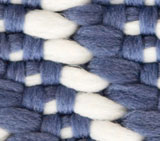
POLYPROPYLENE JACQUARD
Polypropylene Jacquard: Extruded poly yarns make up the warp and weft of this hand-woven rug, with the weft skipping specific warps to create the pattern. Can be reversible.
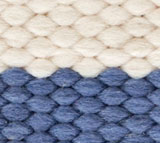
POLYPROPYLENE DHURRIE
Polypropylene Dhurrie: Extruded poly yarns are hand woven with a tight weave in this low-profile rug. The stripe comes from the weft and runs the short dimension of the rug. Can be reversible.
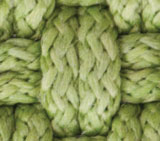
POLYPROPYLENE ROPE WOVEN
Polypropylene Rope Woven: Extruded poly yarns are knit into a rope, and the rope is hand constructed into this highprofile rug. Can be reversible.
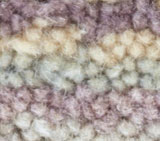
HAND-LOOMED PILE
Hand-Loomed Pile: Loom-generated tuft creates the pile. Stripes run the short dimension of the rug. No back.
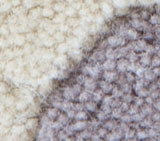
Wool Tufted and Carved: Yarns are hand hooked to create the rug design, then sheared to create the pile. The pile is then hand carved along the design. Cotton canvas back.
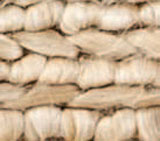
NATURAL JUTE
Natural Jute: Made from natural jute, which features subtle color variations, and woven with looped rows and braided rows. High profile and very durable.
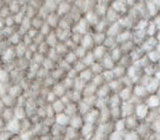
HAND-KNOTTED VISCOSE
Hand-Knotted Viscose: Viscose yarns are hand woven and knotted for a medium pile. Luxurious, lustrous, and plush underfoot.
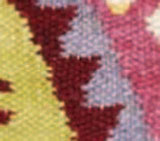
KILIM
Kilim: A special weaving technique creates a geometric design on a flat, thin, reversible rug.
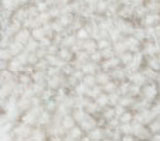
WOOL TUFTED
Wool Tufted: Wool yarns are hand hooked to create the rug design, then sheared to create a plush pile. Cotton canvas back.
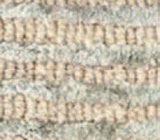
WOOL/VISCOSE CUT & LOOPED
Wool/Viscose Cut and Looped: Wool and viscose yarns are hooked and knotted, creating a medium pile and soft feel.
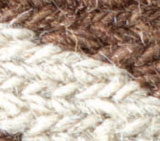
SOUMAK
Soumak: A flat, knotted-construction weave, with braids making up the weft.
How To Fold Fitted Sheets
Fitted sheets are one of the most difficult items in our closet to fold. We can never seem to get them folded as neatly as the flat sheets!
Luckily, Pine Cone Hill’s Annie Selke created this video demonstration to help us out. Mystery solved!
What is Waffle Weave Fabric?
We love our waffle weave fabrics, both for blankets and bathrobes. They have a neat, graphic look, but that’s not all. Waffle weave is functional, too. The experts at Sferra explain:
Waffle weave fabric, also known as a honeycomb weave fabric, is woven to produce a textured surface fabric with a distinctive grid-like pattern of recessed square or diamond shapes, resembling a breakfast waffle or a honey bee comb. In the weaving process, the ridges outlining the squares or diamonds are raised on all sides by floating both the warp and the weft, and gradually decreasing the floats moving from the ridges toward the centers.
Waffle weave fabric has thermal properties, providing warmth and insulation by trapping body heat and forming a warm layer next to the skin, thereby increasing heat retention. In addition, waffle weave fabric is highly absorbent and available in a variety of weights. These features make this fabric perfect for blankets and robes.
Sferra’s best-selling Kingston Waffle Weave Blanket has all of these great features. It also comes in seven delicious colors.
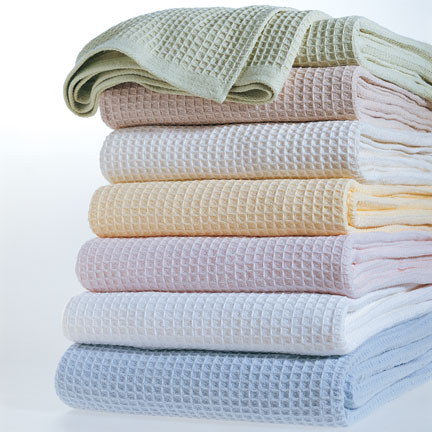
The Edison bathrobe is waffle weave for the bath. It is lightweight, absorbent and soft.
